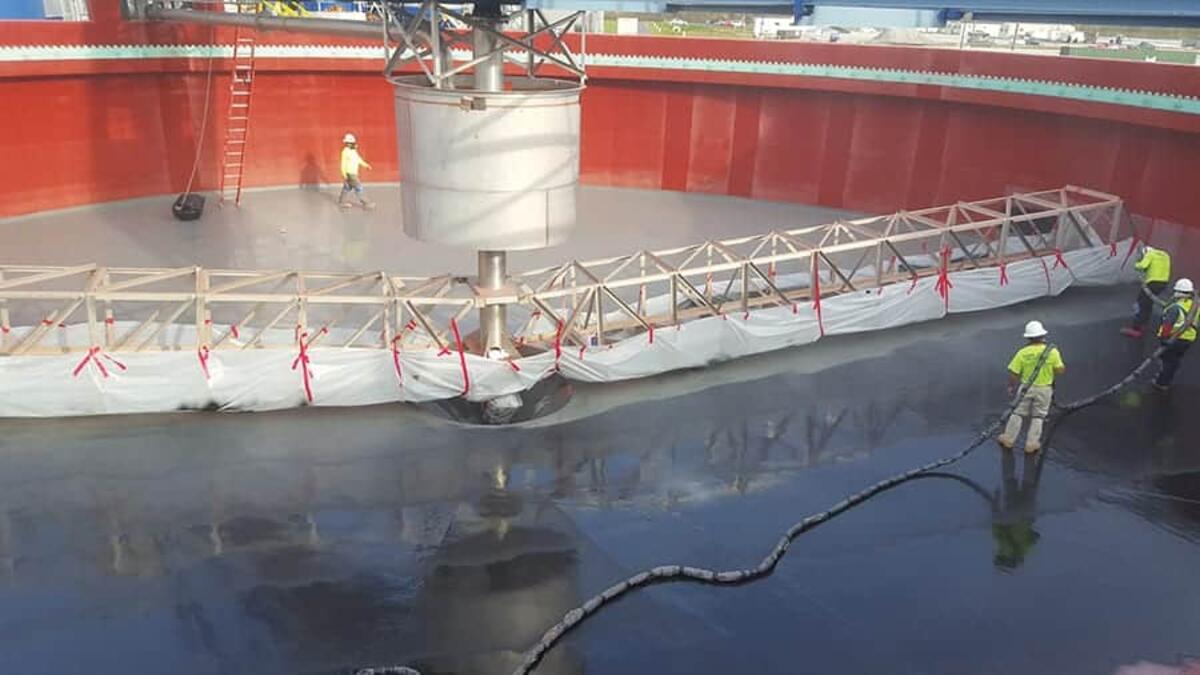Using Polyurea for Secondary Containment: An Effective Solution
When it comes to the storage and transportation of various chemicals and hazardous materials, ensuring proper containment is of utmost importance. Any spill or leakage from storage tanks or containers can have severe consequences for health, safety, and the environment. That is why secondary containment systems are crucial for preventing accidents and containing any potential leakages.
Polyurea, a versatile and highly effective coating material, has emerged as a popular choice for secondary containment. In this article, we will explore the benefits and applications of using polyurea for secondary containment and why it is considered an effective solution.
What is Polyurea?
Polyurea is a type of elastomer that is created through the reaction of an isocyanate component with a resin blend component. The reaction occurs in a spray application, which allows for a fast and efficient application process. It is well-known for its high tensile strength, exceptional flexibility, and chemical resistance.
Benefits of Polyurea for Secondary Containment:
![secondary containment]()
1. Excellent Chemical Resistance: One of the primary reasons for using polyurea for secondary containment is its exceptional chemical resistance. It can withstand exposure to a wide range of chemicals, including acids, solvents, oils, and fuels. This resistance ensures that even if a spill or leakage occurs, the polyurea coating will provide a reliable barrier, preventing any further contamination or spreading of hazardous materials.
2. Fast Application and Curing: Polyurea can be sprayed directly onto the required surface, allowing for a quick and efficient application process. Its fast curing time further contributes to its efficiency, as the coated area can be back in service within hours. This quick turnaround time minimizes any downtime, making it an attractive choice for industries where time is of the essence.
3. Seamless and Flexible: Polyurea forms a seamless membrane when applied, creating a monolithic and impermeable layer. This eliminates any joints or seams where leaks could occur, reducing the risk of failure. Additionally, its flexibility ensures that it can withstand any movement or settling of the underlying structure, preventing cracks or fractures that could compromise the containment system.
4. High Tensile Strength: Polyurea has excellent tensile strength, which provides added protection against physical damage. It can withstand impacts, abrasion, and even direct contact with heavy objects, ensuring the integrity of the containment system over time. This durability makes polyurea a cost-effective long-term solution, requiring minimal maintenance and repairs.
Applications of Polyurea in Secondary Containment:
![secondary containment]()
1. Storage Tanks: Polyurea coatings are commonly used to line storage tanks for chemicals, fuels, and other hazardous materials. The high chemical resistance of polyurea ensures that the stored substances remain contained, minimizing any risk of leakage or contamination.
2. Pipelines: Pipelines are crucial for the transportation of various materials, including oil and gas. Polyurea coatings can be applied to pipelines to provide secondary containment, protecting against any potential leaks during transport. This added layer of protection ensures excellent safety and prevents damage to the environment.
3. Chemical Processing Plants: Chemical processing plants often handle and store a wide range of hazardous substances. Polyurea can be applied to concrete floors, walls, and containment pits within these plants to provide a reliable barrier against spills and leakage. This application helps maintain a safe working environment and prevent any potential environmental hazards.
In conclusion, using polyurea for secondary containment offers significant advantages in terms of chemical resistance, fast application, flexibility, durability, and tensile strength. Its ability to create a seamless barrier and withstand various chemicals makes it an effective solution for preventing accidents and controlling spillages. With its versatile applications in storage tanks, pipelines, and chemical processing plants, polyurea is becoming a preferred choice for industries seeking reliable and long-lasting secondary containment solutions.
Read Also: How Do I Choose The Best Plumber?



